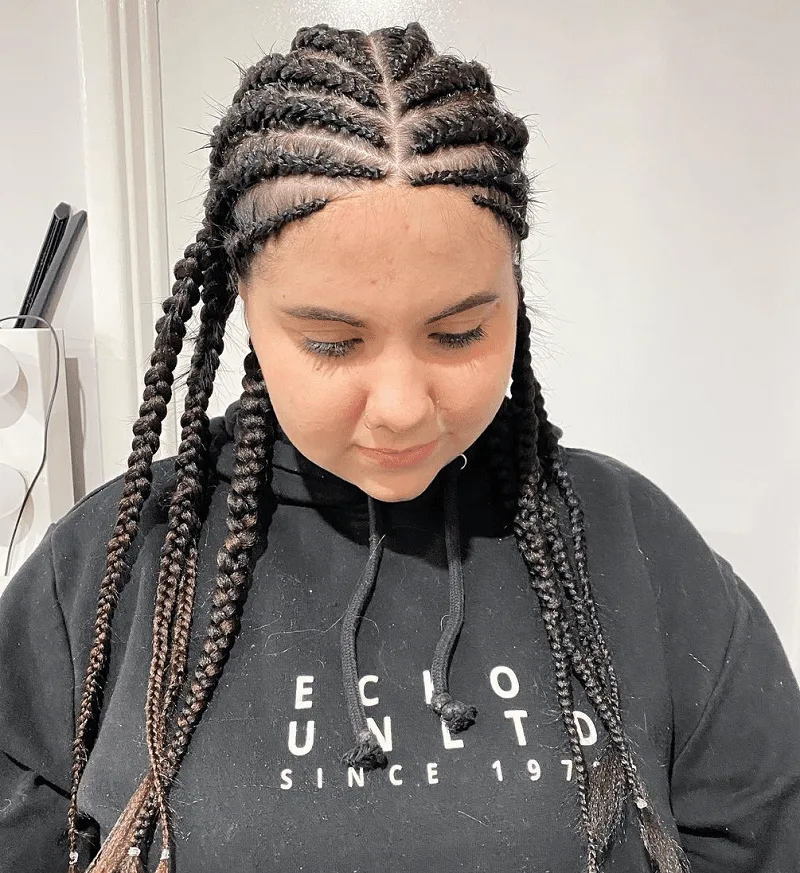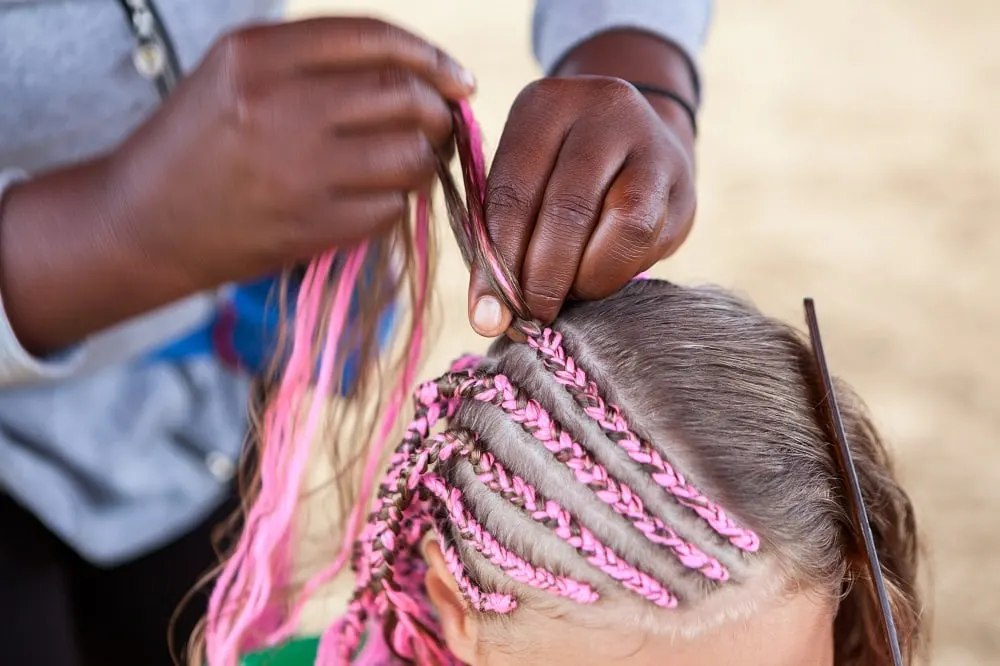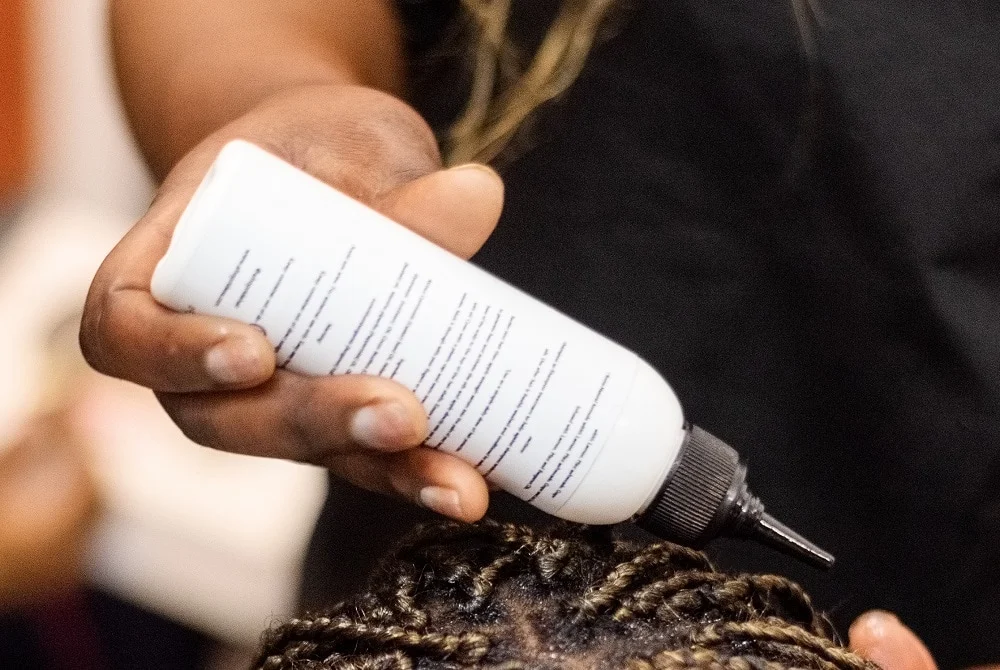You have been thinking about getting cornrows, but your primary concern is if your cornrows become bad. You can get a bad result with any hairstyle you choose, and the trick is finding the right braider and the right cornrow style.
Nowadays, anything is possible. We will give you some advice on how to avoid getting bad cornrows.
Why Do Cornrows Become Bad?

The most common reason people have bad cornrows is that they are too tight, and tight cornrows can lead to hair loss and even a condition called traction alopecia.
Finding a braider who knows how to do cornrows correctly is essential.
Another common reason that people have problems with their cornrows is that they leave them for too long. You should only leave cornrows for six weeks at maximum. When you have cornrows in for too long, they can cause hair damage, tangles, and hair loss.
Another problem can surface when you style the cornrows along your hairline. When the cornrows are too tight, they can pull your hairline back.
You should carefully choose the way you are styling your cornrows and choose looser cornrows.
Examples of Bad Cornrows
Here are three examples of bad cornrows:



How To Avoid Getting Bad Cornrows
There are several things you can do to help make your cornrows look fresh and fantastic.
#1. Hydrate Your Hair
It is crucial to prepare your hair for cornrows. It would be best if you avoided blowdrying but instead hydrated your hair before getting your cornrows. Shampoo and then condition it well. You want to make sure that your roots are healthy before styling.
#2. Not Too Tight

Cornrows that pull too tight can cause hair loss and scalp damage. You want to ask your stylist to avoid pulling your hair too tight while putting in the cornrows. You should not feel pain or itching after your cornrows get done.
You should give your hair and scalp a break after cornrows. Let your hair flow naturally for a month before redoing your cornrows. Your stylist should change the cornrow pattern so that the same areas are not affected each time.
#3. Decide on a Look
Once you have your cornrows in, apply mousse or a similar product all over your hair. Sit under the dryer until your style gets set. You can also wrap your cornrows so they can set. You should avoid products that will cause a buildup in your hair.
#4. Maintenance Routine
Just because you have cornrows doesn’t mean you don’t have to take care of your hair. It would be best to hydrate and wash it daily; it will look a little different than when your hair is not in cornrows.
You should use a clarifying shampoo to eliminate any product buildup in your hair. A moisturizing shampoo will help hydrate your hair, and you can finish up with a conditioner. Next, you should pat your hair dry and apply a leave-in conditioner that will help protect your hair.
#5. Nighttime

Are you scared of ending up with a bad cornrow? Well, a great way to protect the look of your cornrows is by covering them with a scarf before bed. You can apply a hydrating product and wrap your hair with a silk scarf or something similar. Wrapping your cornrows will protect the edges and your roots.
A scarf will help prevent your hair from breaking as you lie on it. Your hair will look healthy and fresh.
#6. Avoid Friction
Your hair will grow even when you have cornrows. It is essential to avoid friction if you want to prevent a frizzy look, so you should be careful when putting on and removing hats. You could cause your cornrows to loosen if you are too rough, and they may look messy.
#7. Avoid Product Buildup

Many people use greasy products on their cornrows to keep them looking good, which is the worst thing you can do. Instead, you should moisturize, moisturize, and moisturize some more.
You can use a damp cloth to clean your cornrows every week, and this will prevent product buildup in your hair.
Water and light oils are best to moisturize your cornrows and scalp. You can use olive oil, coconut oil, and jojoba oil. Mix the oil with water and then press into your scalp and the cornrows. You should avoid rubbing the mixture into your hair because this will loosen your cornrows.
Do Bad Cornrows Damage Your Hair?
When cornrows are too tight, they can lead to hair loss. The damage is not immediate but will happen over time. You should monitor your scalp for redness, soreness, or bumps. These are possible signs that your cornrows are too tight. Cornrows that are too tight can also lead to traction alopecia.
Traction alopecia gets caused by repeated damage to the hair follicles. This type of alopecia is caused by repeatedly pulling on your hair. Cornrows that are too tight can result in this type of alopecia. You can reverse this condition by changing your hairstyle and avoiding those that pull on your hair.
You must maintain your cornrows as you would with any other hairstyle. Washing, conditioning, and moisturizing are all critical to the health of your hair.
What Should You Do if Your Cornrows Are Bad?

Considering the time and money you have invested in your cornrows, getting a bad hairstyle can be disheartening. It does happen, though, and you don’t want to gamble the health of your hair follicles, roots, and scalp for a temporary hairstyle.
When you feel discomfort from your cornrows, or you can tell that they are too tight, the wisest thing to do is remove them immediately.
Massage moisturizer or a de-tangling product into your cornrows; start from the ends, and work towards your scalp. Use your fingers to unravel and work out any tangles as you go.
Use a wide tooth comb and work each section of your hair. It is sometimes easier to separate your hair into sections and clip them. Gently comb through your hair to remove all the tangles. Once the cornrows are out, shampoo and condition your hair as you usually would.
Summary
Tips to avoid getting bad cornrows:
- Hydrate your hair before getting cornrows.
- Ask your stylist to avoid pulling your hair too tight.
- Give your hair and scalp a break after cornrows.
- Decide on a look and apply mousse or a similar product all over your hair.
- Maintain your cornrows by washing, conditioning, and moisturizing them daily.
- Cover your cornrows with a scarf at night to protect them.
- Avoid friction when putting on and removing hats.
- Avoid product buildup by using a damp cloth to clean your cornrows every week.
- Moisturize your cornrows and scalp with water and light oils.
FAQs
1. Remove them immediately.
2. Massage moisturizer or a de-tangling product into your cornrows.
3. Use a wide tooth comb to work each section of your hair.
4. Once the cornrows are out, shampoo and condition your hair as y
Tight cornrows can lead to hair loss and traction alopecia. Leaving cornrows in for too long can cause hair damage, tangles, and hair loss. Cornrows that are too tight along the hairline can pull the hairline back.
Yes, tight cornrows can lead to hair loss and traction alopecia. You must maintain your cornrows as you would with any other hairstyle.
Trending Topics
